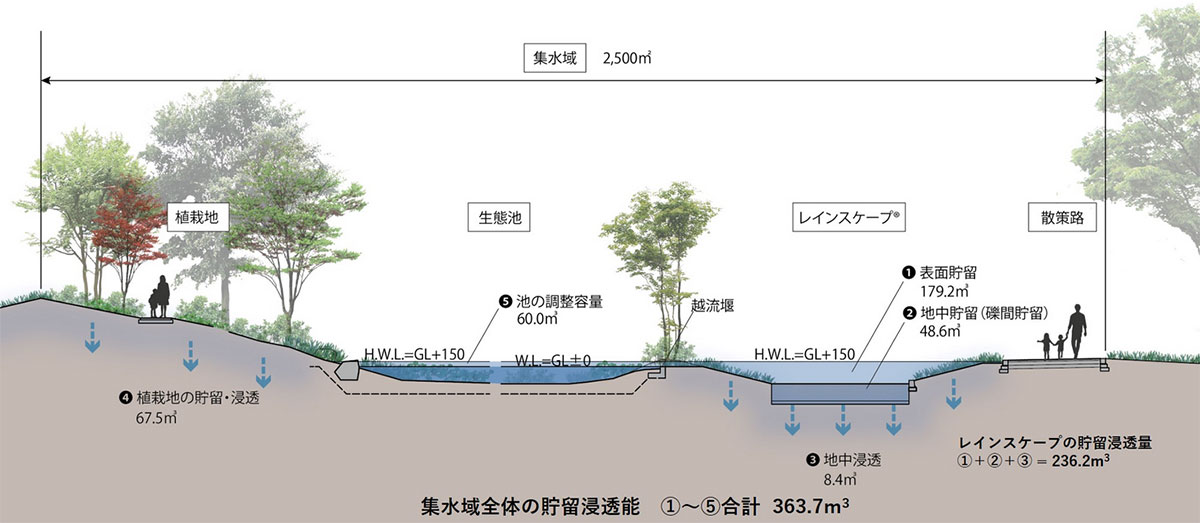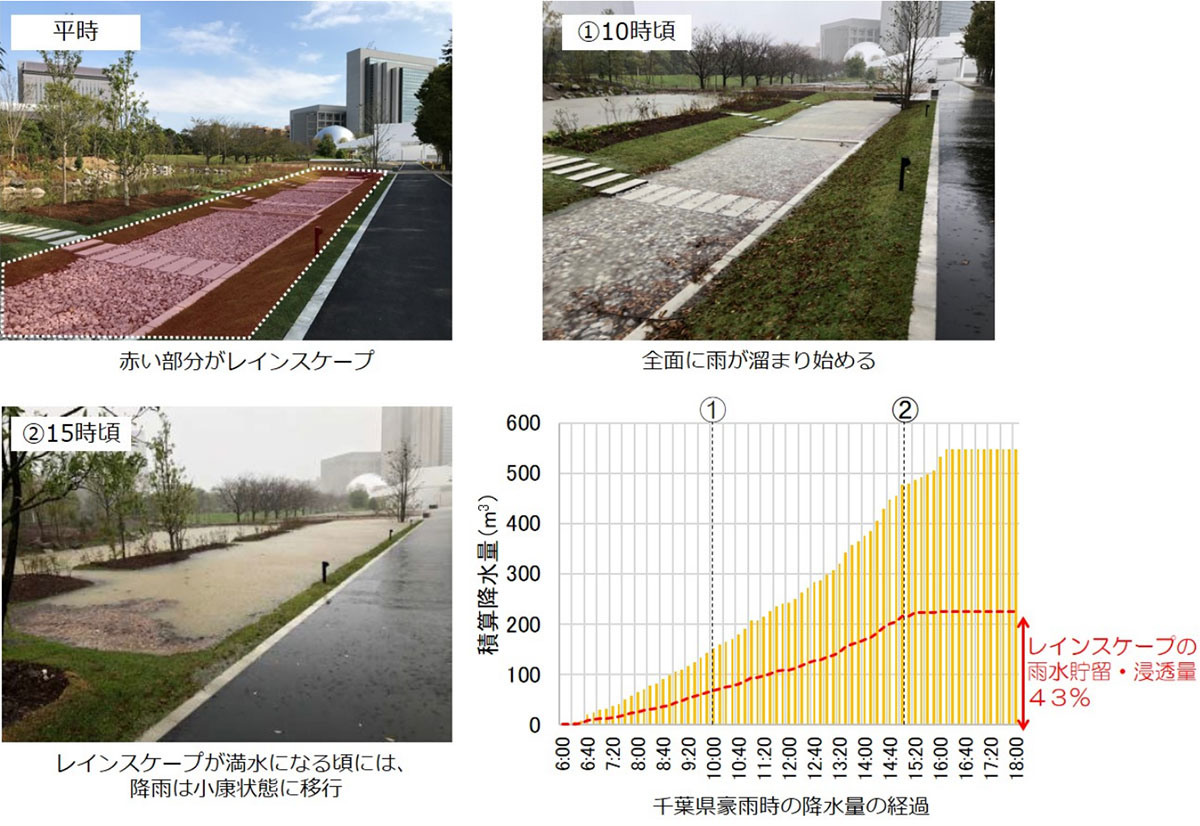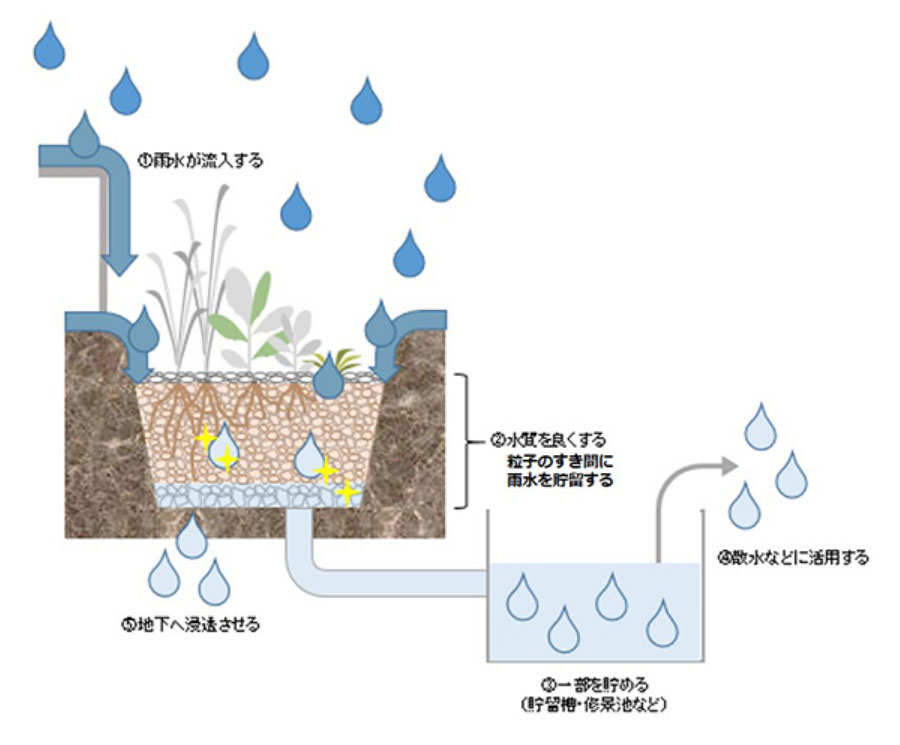Rainwater Storage and Infiltration Technology "Rainscape®"
TAKENAKA CORPORATION
| Publication date | September 21, 2023 (Posted on May 10, 2024) |
|---|---|
| Sector | Natural Disasters / Coastal Areas ・ Water Environment / Water Resources |
Company Overview

Since its founding in 1899, Takenaka Corporation has been engaged in a variety of businesses, including building and construction work and real estate management.
Climate Change Impacts
In recent years, flood damage (inundation) caused by torrential rains and typhoons has become more frequent in urban areas, and water pollution due to overflow during rainfall in combined sewer systems has become a growing issue. These phenomena are expected to become increasingly serious in the future due to the decrease in rainwater infiltration area caused by urbanization, combined with the effects of climate change. In response, the national and local governments are promoting underground infiltration of rainwater and measures to control runoff into sewers.
Adaptation Initiatives
“Rainscape®” is a green infrastructure technology that solves urban flooding problems while utilizing the versatility of nature. The above-and under-ground water storage areas will function as "rainwater storage and infiltration space" during heavy rains to control peak water flow. The aboveground area can also function as a multifunctional green space at other times, creating an attractive landscapes and enhancing biodiversity. The features of this technology are as follows:
1. Control the amount of rainwater flowing into sewers and rivers during heavy rainfall
The heavy rainfall of Typhoon No. 21 that occurred in Chiba prefecture in October 2019, recorded the equivalent of one month's rainfall in October of a normal year (219 mm rainfall) in just half a day. They had 548 m³ of rain in 12 hours in the catchment area of approximately 2,500 m² at the Takenaka Research & Development Institute in Inzai City, Chiba Prefecture, but Rainscape® successfully controlled the runoff to the sewage system by approximately 43% (Figs. 1 and 2).
2. Improve water quality, infiltrate into the ground, and store water
Rainscape® contributes to the maintenance and restoration of a safe water circulation system not only during heavy rainfall but also during normal times. First, suspended solids, organic matter, nitrogen, phosphorus, and other substances contained in rainwater are removed to improve water quality, part of which is stored in a cistern or landscape pond for sprinkling water on plants, and the remainder percolates underground. The underground area works as follows (Fig. 3):
- Rainwater collected from roofs and sites flows into Rainscape® (including contamination from the water collection process).
- Water quality gets improved by Rainscape® (remove suspended solids, organic matter, nitrogen, phosphorus, etc.)
- Partial rainwater is collected and stored in a retention tank, landscape pond, etc.
- Used for sprinkling water on plants, etc.
- Rainwater that was not stored infiltrates into the underground.
3. Preserve landscape and biodiversity
By incorporating local characteristics and climate into the aboveground planting design, the space will function as a multifunctional green space that can demonstrate the multifunctionality of nature and provide a variety of ecosystem services even under everyday conditions, as follows (Fig. 4):
- Creation of attractive landscaping: Creating a place for relaxation and refreshment with spatial design suited to the local area, contributing to increase the attractiveness of the facility.
- Preservation of biodiversity: Creating a vegetated landscape that is rooted in the community and providing a habitat for living creatures by planting plants that are in harmony with the local ecosystem.
- Heat control: Expecting effectiveness of heat countermeasure by planting area that has to increase an evapotranspiration.
- Creation of opportunities for environmental education and community collaboration: Contributing to the development of a sustainable society by providing a place to experience and learn about the relationship between our daily lives and nature.
Effects / Expected Benefits
- The expected benefits of Rainscape® are as follows:
- Reduce the amount of rainwater discharged into sewers and rivers during heavy rainfall and the pollution load caused by CSO (Combined Sewer Overflow).
- Create a relaxing space with a spatial design suited to the region and contribute to increase the attractiveness of the facility.
- Contribute to biodiversity conservation by planting native plant species that suit the local climate.
- Improve the heat balance by greening and expect benefits of heat countermeasure.





